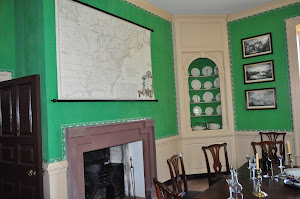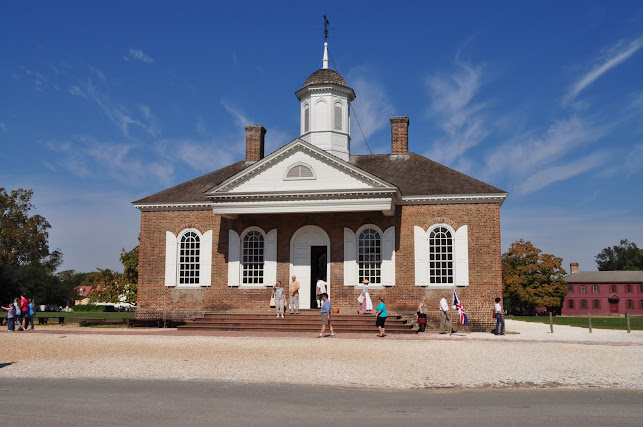One of our favorite family vacation destinations is Virginia. Specifically, the Historical Triangle area, which is comprised of: Jamestown, Colonial Williamsburg and Yorktown.
We have been vacationing there every few years for the better part of 10 years and each time we seem to find new sites to visit and always run out of time before we run out of things to do. Most recently, we expanded out past the Historic Triangle and ventured to Monticello which is around 110 miles from Williamsburg in Charlottesville, and Mount Vernon which is around 105 miles from Williamsburg in a completely different direction. Both are equally amazing and majestic, but in very different ways.
I'll start off with our basecamp, Colonial Williamsburg.
Colonial Williamsburg
Williamsburg was founded in 1632 between the James and York rivers. It was the capital city of the Commonwealth of Virginia from 1699 to 1780, when it moved to Richmond. Williamsburg just was just as central to the political events leading up to the American Revolution as Boston and New York. It is home to the second oldest institution of higher education, The College of William and Mary, which was established in 1693.
Colonial Williamsburg, is the name for the city's restored historic area (88 of the buildings are original). It is truly a living museum (it's actually called the world's largest living museum). There are hundreds of restored/recreated historic buildings, reenactments and famous historic persons to interact with (we've bumped into The Marquis de Lafayette and James Madison), as well as all of the colonial-area trades you could ever hope to see in action. Our family favorite is the brick maker.
Old Frenchman's map of Williamsburg
The Governor's Palace
Completed in 1722, the Governor's Palace was home of the royal governor of Virginia. It was also the home of two of Virginia's post-colonial governors, Patrick Henry and Thomas Jefferson. The main building was destroyed by fire in 1781 and the rest demolished during the Civil War. Reconstruction of the buildings and garden began in 1929 and the buildings and grounds opened in 1934.
George Wythe House
Constructed between 1752 and 1754, the Wythe House is one of the most impressive private dwellings in Colonial Williamsburg, as well as one of the 88 original structures. It served as the headquarters for George Washington prior to the siege of Yorktown in 1781.
Peyton Randolph House
The oldest portion of the house was built in 1715. The interior of the house still has the original 18th century woodwork and marble fireplace.
Capitol Building
Williamsburg was the capital of Virginia from 1705 until 1780 when it was moved to Virginia. The Capitol building housed both houses of the Virginia General Assembly, the Council of the State and the House of Burgesses. The Capitol was reconstructed in the 1930s.
Constructed from 1770 to 1771, the courthouse is one of the 88 original structures and is the location where Benjamin Waller read aloud the Declaration of Independence on July 25th, 1776 when it arrived from Philadelphia.
The Magazine
The Magazine was constructed in 1715 to house ammunition and weapons. It is one of the 88 original structures in Colonial Williamsburg and the sire of the infamous gunpowder incident of 1775.



























Comments
Post a Comment